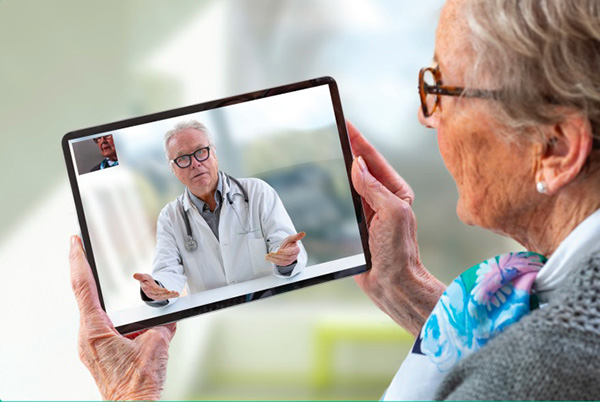
By Jamie Jablonowski
Some may remember a time when doctors made house calls. With the help of modern technology, many doctors have found themselves returning to this old-school approach, meeting patients at their bedside, though virtually rather than in person.
With social distancing measures in place until at least the end of April, medical professionals are quickly utilizing advances in technology to provide services to patients. Telehealth allows individuals to access health care providers from the comfort of their living room, without the risk of additional exposure.
Renee Dougherty, D.O. is a physician at Hackensack Meridian Health Primary Care at Tinton Falls. In her office they are beginning to utilize telehealth for a wide range of conditions, including rashes, anxiety, depression and diabetes.
Dougherty has several recommendations for individuals preparing for appointments by phone or video. During a regular visit, a patient would have their vital signs and weight taken at the beginning of the appointment. She recommends patients weigh themselves before meeting with their doctor and have handy a log of their blood sugar tests and blood pressure readings, if appropriate and available.
Some patients may be nervous about trying telehealth. Dougherty assures that all privacy regulations are maintained. “You’re still able to see the doctor and the doctor is able to see you,” she said. “The doctor won’t be touching you, but a lot of the time, asking the right questions can get you to a diagnosis.”
Some conditions, such as heart failure, where a physical exam is important, may require an in-person visit. Dougherty recommends calling your doctor with any questions to help you determine what is most appropriate.
Mental health appointments have also begun to transition to telehealth. Seth Arkush, managing partner of Integrated Care Concepts and Consultation has transitioned most of his sessions to video or phone appointments. He recommends patients find a quiet and comfortable space where they can take their appointment where they won’t be interrupted.
Some patients may initially be nervous about meeting this way but, as Arkush explained, “We talk and work through the anxiety.” He added that it doesn’t usually take long for patients to become comfortable and “it just kind of flows.”
While meeting in-person is always preferred, health care professionals are working with the resources they have.
“Is it as good as face-to-face? No, but it’s what we have,” Arkush said. “It’s an imperfect world. We can focus on what we don’t have, or we can focus on what we do have. We choose to focus on the latter.”
Adam Glasgow, a resident of Monmouth Beach, works for Campbell Petrie, a health insurance broker. He promotes telehealth for his clients and has utilized video appoint- ments frequently himself. “It’s a super convenient way to see a doctor and also a lot of times less expensive than going into the doctor’s office,” he said.
“You do pay a regular co-pay like a regular visit, but you don’t have to sit in the waiting room with sick people. You can even use it for your kids,” said Glasgow. In his industry, he has seen massive increases in utilization and organizations are hiring doctors to keep up with the demand.
If you are worried you may be experiencing symptoms of coronavirus, now known as COVID-19, it is best to call your doctor first. Dougherty explained that unless it is an emergency, “call your doctor to get instructions on what to do, knowing you may have a little bit of a time lag getting in touch.”
She added, “If it feels like it’s something life-threatening and they can’t breathe, they have a fever of 104 or 105, or they have chest pain, those are obviously things that should be looked at urgently and go to an ER for that.”
If you have questions about telehealth options available to you, you can call your doctor or insurance company for more information.
This article originally appeared in the April 2nd, 2020 print edition of The Two River Times.














